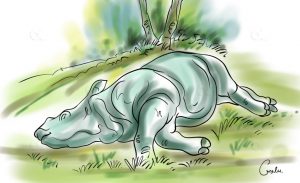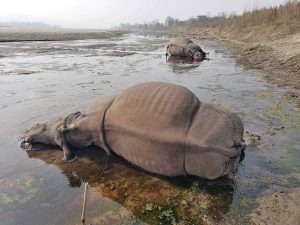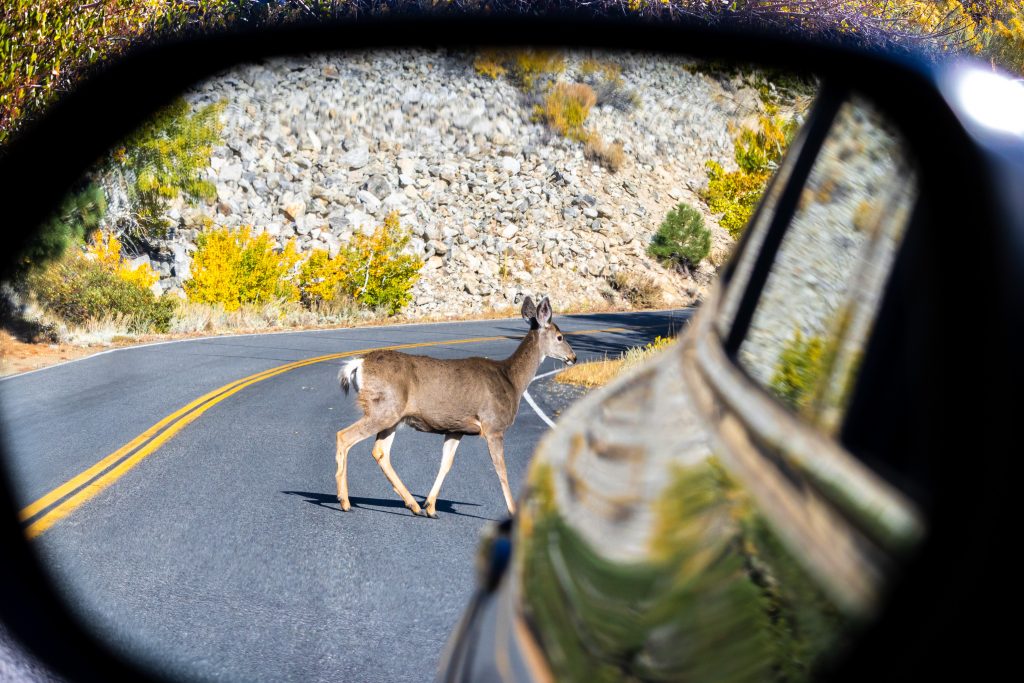
Road infrastructure plays a pivotal role in facilitating the movement of people and goods and providing access to various commercial and social activities. However, the increasing vulnerability of wildlife to road infrastructure, especially in protected areas, is a matter of concern.
Studies have shown that after legal harvesting, roads are the second-largest source of anthropogenic mortality for many vertebrates globally. Unfortunately, Nepal is no exception as roadkill has been responsible for a significant proportion of all unnatural wildlife deaths in the country over the last decade.
Wildlife roadkill, also known as wildlife-vehicle collisions, is a serious issue that arises when wildlife and moving vehicles share the same road and cannot anticipate each other’s actions. This problem is particularly acute in Nepal, where the expanding road networks pose a significant threat to wildlife populations.
The most immediate impact of roads on wildlife is fatal collisions with vehicles, which can cause severe injuries or death to animals. This can have a significant impact on the population dynamics of species and disrupt ecological processes. Apart from wildlife-vehicle collisions, the effect of raised embankments, guardrails, culverts and retaining walls within the road can also create obstacles for wildlife to move freely across their habitats.
East-West Highway: The wildlife death zone

Wildlife-vehicle collisions are skyrocketing in Nepal, especially in protected areas linked by highways in the lowlands. East-West Highway, which intersects several national parks in the country, is regarded as a death zone for wildlife.
This highway runs through Parsa, Chitwan, Banke, Bardiya and Shuklaphanta national parks. According to the annual report of the Department of National Park and Wildlife Conservation (DNPWC), over the past half-decade (2017–2022), there were 591 documented cases of wildlife being killed on roads within protected areas.
The highest number of cases occurred during the fiscal year 2020/2021, with a total of 132 cases, followed by 124 cases in 2017/2018, 119 cases in 2018/2019 and 108 cases in both 2019/2020 and 2021/2022.
Wild boars and spotted deer were the most commonly killed species in cases of wildlife-vehicle collisions. However, other species, such as golden monitor lizards, monkeys, leopards, porcupines, tigers, fishing cats, foxes, pythons, leopard cats, and golden jackals, have also been victims of roadkill.
An increasing trend
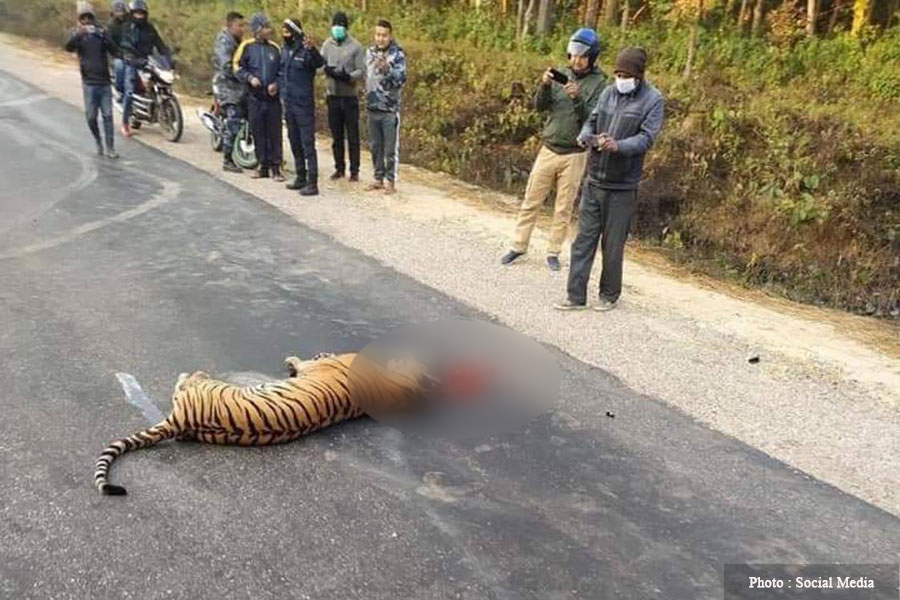
Nepal’s Barandabhar corridor forest, which connects to India’s Valmiki Tiger Reserve via Chitwan National Park, is only the vertically connected corridor, allowing wildlife movement from this national park to the Mahabharat hills of Nepal.
However, East-West Highway, the country’s busiest highway, cuts through the forest, leading to the untimely deaths of several species in wildlife-vehicle collisions. Despite strict enforcement of a maximum speed limit of 40 km/h by the park and forest offices, few drivers adhere to this rule.
A study conducted by Anjila Lamichhane in 2019 in the Barandabhar corridor forest revealed that the mean speed of vehicles was highest at night (83.60 km/hr), followed by morning (69.16 km/hr), evening (68.84 km/hr) and day (67.95 km/hr). As a consequence, there will be high wildlife bump events in this corridor forest, putting wildlife at a serious threat.
Parsa National Park is also experiencing a massive frequency of wildlife-vehicle collisions, with 42 deaths in 2018/19 out of 119. The Pathlaiya-Amlekhgunj road section has the highest number of accidents, putting the park’s conservation efforts in jeopardy. In 2021, a tiger crossing the road was hit by oncoming traffic and died in the same section.
Banke National Park in western Nepal is experiencing a surge in wildlife roadkill, with East-West Highway running through the park for 72 kilometres and the north-south Ratna Highway for 32 kilometres. These highways pose a significant threat to the survival of wildlife of all sizes, from large to small mammals. In 2019/2020, out of 108 wildlife-vehicle collision incidents, Banke National Park alone had 48 incidents.
Bardiya National Park has a grave record of wildlife roadkill, holding the highest number of cases in the country in the fiscal year 2016/17, with a total of 66 cases. In the fiscal year 2019/20, the park reported 35 cases of wildlife killed on its roads due to vehicular collisions. Notably, two cases of roadkill tigers, one in 2016 and the other in 2019, had been registered in this park.
A 52-year-old woman was dragged and killed by a tiger from the pillion of a motorcycle riding on East-West Highway that runs through Bardiya National Park in January 2021, raising concerns about the country’s tiger conservation efforts.
Combating wildlife-vehicle collisions
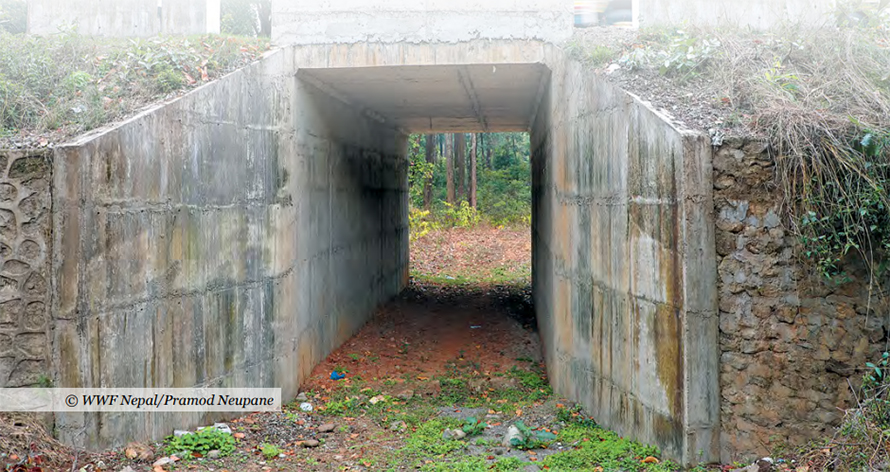
To combat these types of wildlife-vehicle collisions, the government of Nepal has developed the Wildlife Friendly Linear Infrastructure Guidelines. The most notable wildlife crossing structures in protected areas of Nepal are the underpass in Chitwan National Park and the under-construction overhead pass in Bardiya National Park.
The use of canopy bridges in Banke National Park has shown some success in preventing road collisions involving arboreal wildlife. National parks have implemented various measures, such as time card systems, speed limits and wildlife signboards to reduce roadkill incidents.
However, some studies suggest that these indirect approaches may not effectively change driver behaviour. Unfortunately, Nepal lags behind other countries in monitoring wildlife-vehicle collisions through a citizen science approach.
Additionally, there is a dearth of robust studies on the factors influencing driver behaviour, the effectiveness of road-crossing structures, the causes of roadkill and cost-effective strategies for mitigating roadkill within wildlife-road collision hotspots.
Nepal is experiencing a paradigm shift in wildlife conservation, as evidenced by the significant increase in tiger and rhino populations, as well as efforts to conserve other globally threatened species. However, there is still much groundwork to be done in terms of maintaining habitat connectivity, genetic diversity, and population levels in the face of growing anthropogenic pressure.
Addressing the issue of wildlife-vehicle collisions on East-West Highway is a crucial aspect of this effort and can serve as a stepping stone for the country’s next step of conservation. Furthermore, this could be an opportunity to focus on small wild mammals like jungle cats, leopard cats, monkeys and porcupines, that are frequently killed by vehicles.
Strict enforcement of speed limits and raising awareness about wildlife conservation among drivers are crucial to ensuring the long-term survival of wildlife. The ecological requirements and wildlife-friendly guidelines should also be strictly implemented in the under-construction linear infrastructure, such as Hulaki Highway and Mid-Hill Highway.
Additionally, constructing underpasses, overpasses and wildlife crossing structures in protected areas can help reduce the impact of high road traffic on wildlife. Urgent action is needed to ensure the safe movement of wildlife, including the use of low-noise pavements and the planting of native vegetation along roadsides.
More effective techniques must be developed through evidence-based research to reduce wildlife-vehicle collisions. It is important for the government and conservation organisations to collaborate and innovate wildlife-friendly solutions to mitigate the impact of linear infrastructure on Nepal’s wildlife.





